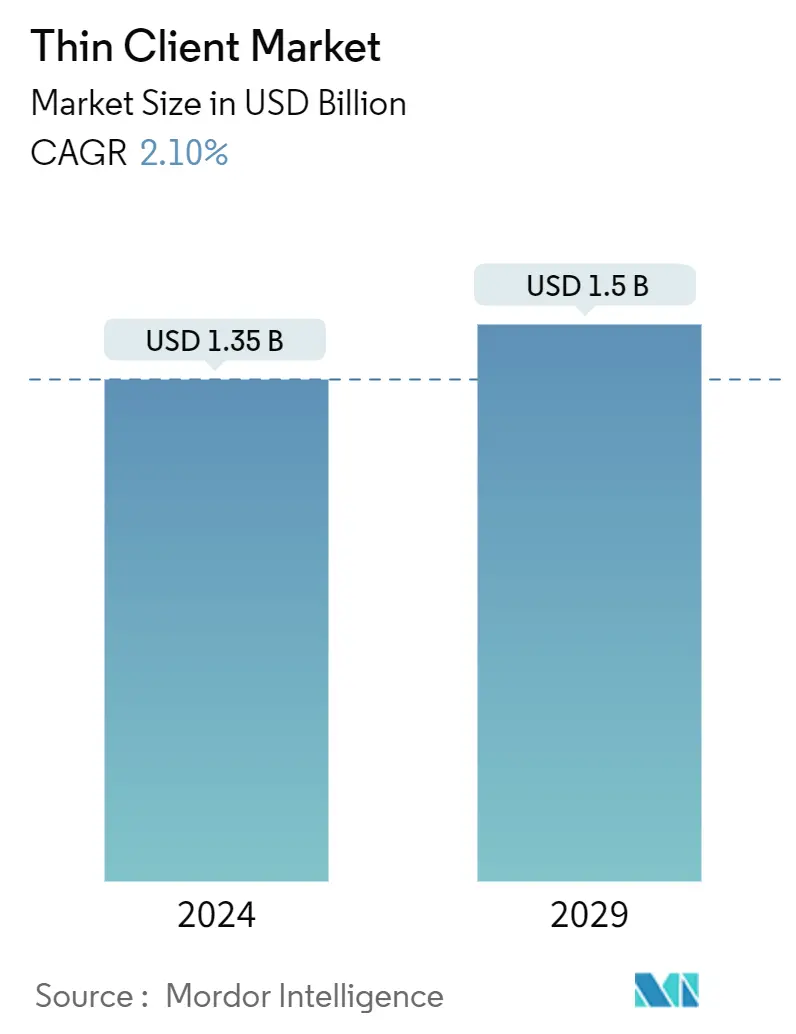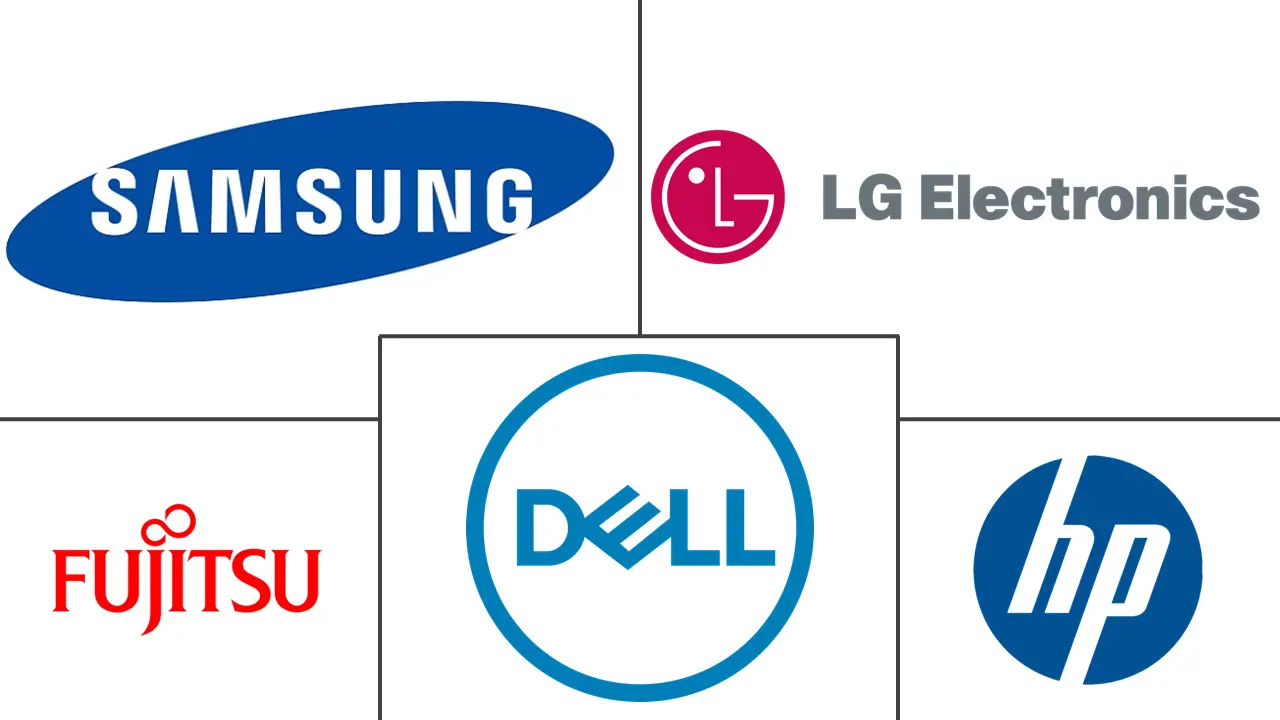Market Size of Thin Client Industry

| Study Period | 2019 - 2029 |
| Market Size (2024) | USD 1.35 Billion |
| Market Size (2029) | USD 1.5 Billion |
| CAGR (2024 - 2029) | 2.10 % |
| Fastest Growing Market | Asia Pacific |
| Largest Market | North America |
Major Players
*Disclaimer: Major Players sorted in no particular order |
Need a report that reflects how COVID-19 has impacted this market and its growth?
Thin Client Market Analysis
The Thin Client Market size is estimated at USD 1.35 billion in 2024, and is expected to reach USD 1.5 billion by 2029, growing at a CAGR of 2.10% during the forecast period (2024-2029).
The market for thin clients is expected to increase in the forecast period mainly because of its advantages, i.e. cost savings and reduced energy consumption, centralisation and ease of management as well as increased infrastructure security offered by these devices.
- Various industries seek low-cost devices that significantly decrease desk space and offer an easy replacement/upgrade for conventional systems. The thin client systems qualify for these requirements. They can also reduce energy consumption over a period, which is the primary reason for the increasing demand for devices across various industries.
- The healthcare industry is also witnessing an extensive adoption of devices as a computing solution, owing to their security benefits. In contrast, the IT and telecom industry is installing these devices primarily to facilitate the development of a virtual network. Implementing thin client devices in enterprises or other areas can provide better security-related advantages, as they limit the user from any intrusion in a local machine setting. This application renders the system more secure and protected.
- Various educational institutions, such as colleges, research institutes, and labs, are increasingly adopting thin client solutions to control the monitors centrally at the IT control department, thereby reducing energy consumption. These devices also decrease the cost of system upgrades and the time consumed in setting up the PC or laptop at each login.
- The increasing growing adoption of cloud computing is also driving market growth. Several organizations use cloud computing to reduce costs and access the data and applications not installed on the computers or servers. Clouds emerged as an infrastructure that may enable the rapid delivery of computing resources as a utility in a dynamically scalable and virtual manner. Various organizations across the world are moving to a hybrid and multi-cloud environment. A thin client contributes to a comparatively less expensive and secure hardware solution, driving the market's growth.
- With the rising adoption of workspace-as-a-service (WaaS) in several enterprises, the market is anticipated to witness augmented demand during the forecast period. WaaS is a desktop virtualization used by multiple organizations to provide their employees access to applications remotely. However, network issues in developing countries for cloud computing are expected to restrain the growth of the studied market.
- Energy companies operating in a geopolitically sensitive industry face frequent cyberattack targets, especially from foreign governments. However, using the cloud as a base for desktop virtualization allows sensitive information to be stored centrally, and authentication policies can be set to secure the cloud environment. This factor is anticipated to generate demand for the thin client market.
- Over the last decades, there has been an increasing trend of remote work. But the effect of COVID-19, which has dramatically accelerated this trend during a very brief period but forced companies regardless of size to adjust quickly to selfisolation measures called for by governments around the world, is rapidly accelerating it. With the pandemic requiring more people to be working remotely, the concern regarding the security of data sharing among employees increased. This has been driving the adoption of the demand for thin-client devices.
